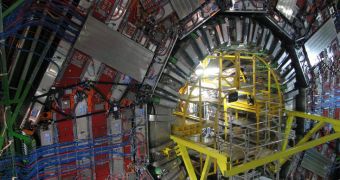A Court in Hawaii has just rejected a new lawsuit brought against the Large Hadron Collider. The plaintiffs failed to produce any evidence that the machine is dangerous, the ruling says.
The decision was passed down on August 24, by a Hawaiian appeals court. The judges said that the US Department of Energy (DOE) and the US National Science Foundation (NSF) could not be held responsible for any ill side-effects that may derive from using the LHC.
The judges said that the same holds true for other funding institutions in the United States that contributed to financing the nation's share of the massive international project.
The LHC is the largest particle accelerator in the world, and it is built underground beneath Geneva, near the French-Swiss border.
Its 27-kilometer long tunnels contain some of the world's most powerful magnets, which can accelerate proton beams at energy levels of up to a combined 14 teraelectronvolts (TeV).
The machine, which is widely considered to be one of the most advanced scientific experiments in the world, is managed by the European Organization for Nuclear Research (CERN).
Since the structure was completed in 2008, numerous people have somehow got it into their heads that the particle collider can destroy Earth by producing microscale black holes.
But scientific studies have demonstrated beyond a reasonable doubt that such an event is nearly impossible. In either case, it's extremely unlikely that something like this will happen.
In 2008, Walter Wagner of Hawaii and Luis Sancho of Spain filed suit against the LHC in Hawaii, but the decision the judges passed was not the one they expected.
“The alleged injury, destruction of the Earth, is in no way attributable to the US government's failure to draft an environmental impact statement,” the 3-page ruling reads.
Far from being annoyed by these lawsuits, the 3,000+ researchers working on the LHC say that they are happy these people filled suit," NewScientist reports.
The vast publicity that surrounded these events brought the field of particle physics back into the public eye, which is something that never happened before.
The LHC began conducting science operations last year, and will continue to smash particle beams until the beginning in 2012.

 14 DAY TRIAL //
14 DAY TRIAL //